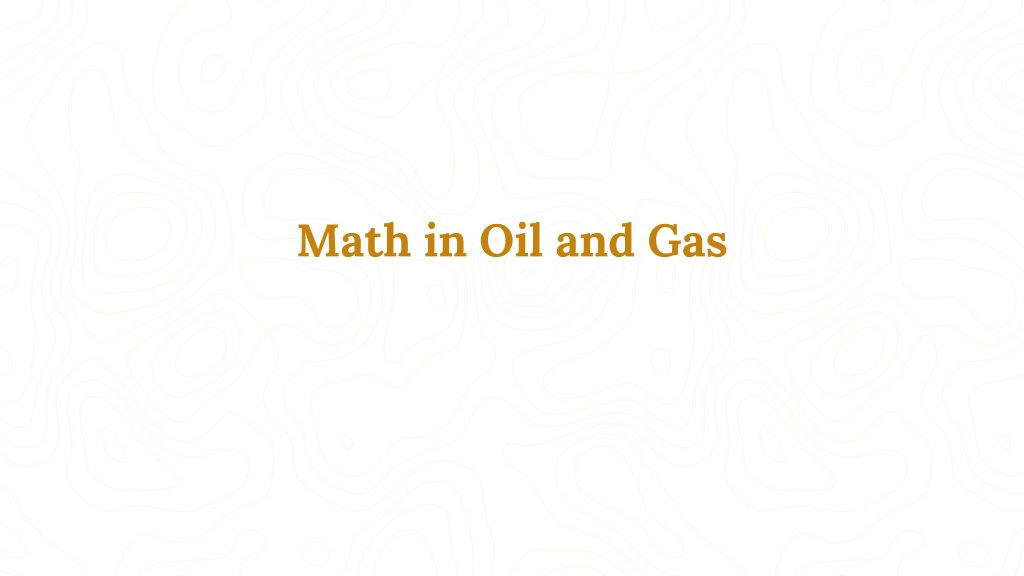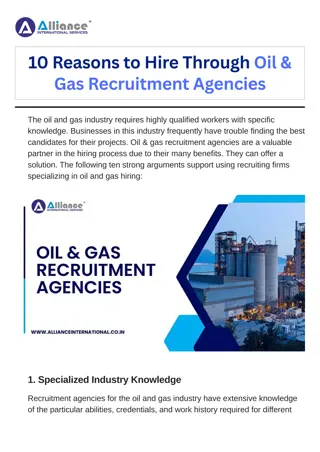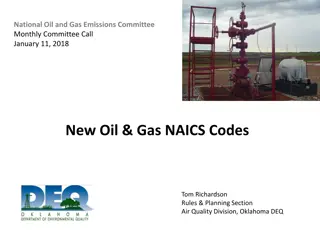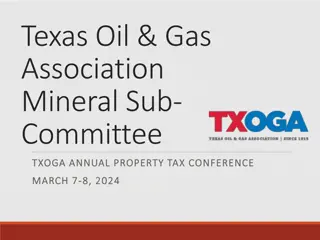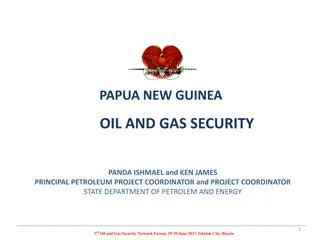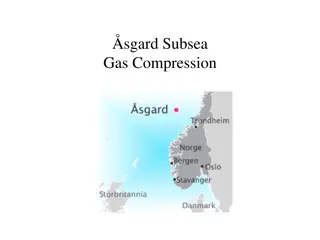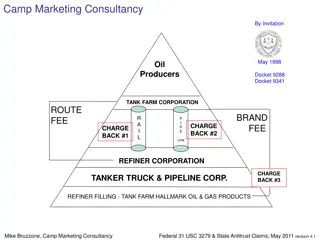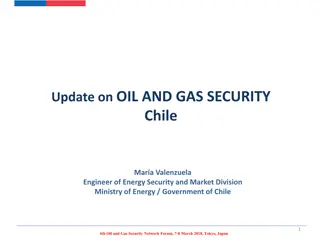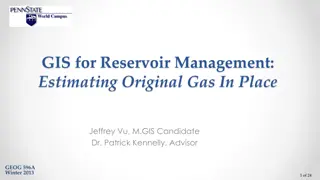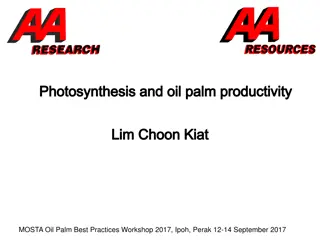Understanding Key Factors in Oil and Gas Industry
Explore essential concepts in the oil and gas sector such as oil volume at surface conditions, gas volume at standard conditions, porosity measurement, water saturation, and formation volume factor. Learn how to calculate stock tank oil volume, gas in place, and interpret crucial parameters for reservoir analysis.
Download Presentation

Please find below an Image/Link to download the presentation.
The content on the website is provided AS IS for your information and personal use only. It may not be sold, licensed, or shared on other websites without obtaining consent from the author. Download presentation by click this link. If you encounter any issues during the download, it is possible that the publisher has removed the file from their server.
E N D
Presentation Transcript
Math in Oil and Gas California Department of Conservation | conservation.ca.gov
Oil Volume at Surface Conditions Stock Tank Oil Volume = 7758 (Area)(Height)(Porosity)(1-Water Saturation) (Formation Volume Factor) 7758 Area Height Porosity Water Saturation Formation Volume Factor Stock Tank Oil Volume Constant-Barrels per Acre Foot Acres Feet Percentage Percentage Reservoir Barrel/Stock Tank Barrel Barrels 2 California Department of Conservation | conservation.ca.gov
Gas Volume at Standard Conditions Gas in Place = 43,560 (Area)(Height)(Porosity)(1-Water Saturation) 43,560 Area Height Porosity Water Saturation Formation Volume Factor Gas Volume (Formation Volume Factor) Constant-Cubic Feet per Acre Foot Acres Feet Percentage Percentage Reservoir Cubic Foot/Surface Cubic Foot Cubic Feet 3 California Department of Conservation | conservation.ca.gov
Porosity Measure of the volume within a rock that is available to contain reservoir fluids It is a percentage (usually in the range of 5% to 30%) Total and Effective Porosity Certain rocks contain some pores which are not in communication with adjacent pores Sandstones the total and effective porosity are the same Some types of carbonates the total and effective porosity are different Measure Porosity by: Cores Well logs (Sonic, Density, Neutron) Pressure Transient Testing 4 California Department of Conservation | conservation.ca.gov
Water Saturation Water Saturation is the fraction of the total pore space occupied by water Determined by cores or by well logs 5 California Department of Conservation | conservation.ca.gov
Formation Volume Factor Pressure*Volume=n*R*Temperature Reservoir temperatures and pressures are almost always higher than standard conditions (60o F and 14.7 psi) Gas is released as pressures and temperature changes Formation Volume Factor adjusts for this gas release Stock Tank Barrels are barrels at standard conditions 6 California Department of Conservation | conservation.ca.gov
Decline Analysis Decline curve analysis is a means of predicting future oil or gas well production based on past production history. Production decline curve analysis is a traditional means of identifying well production problems and predicting well performance and life based on measured oil well production. 7 California Department of Conservation | conservation.ca.gov
Decline Curve Analysis ln(q)=ln(qi)-dt q=current production rate (barrels per day) qi=initial production rate (barrels per day) t=time (years) d=decline rate Sample Calculation Current production = 94 BOPD Initial production = 100 BOPD Time = 1 year 8 California Department of Conservation | conservation.ca.gov
Decline Curve Example ln(q)=ln(qi)-dt ln(q)=ln(qi)-dt ln(94)=ln(100)-d(1) 4.543=4.605-d(1) d=0.062=6.2% decline per year Sample Calculation Current production = 94 BOPD Initial production = 100 BOPD Time = 1 year 9 California Department of Conservation | conservation.ca.gov
Whats the production in 2 years ln(q)=ln(qi)-dt ln(q)=ln(qi)-dt ln(q)=ln(100)-(0.062)(2) ln(q)=4.605-0.124 q=88.4 BOPD Sample Calculation Decline=0.062 Initial production = 100 BOPD Time = 2 year 10 California Department of Conservation | conservation.ca.gov
Reservoir Simulation Models 11 California Department of Conservation | conservation.ca.gov
Financial Importance of Reserves Proved reserves are what banks will give loans The value of the company is based on the value of the proved reserves Financial Earnings of oil companies in a year are: Revenue-Operating Expenses-Depreciation(Based on units of production) Depreciation =Barrels Produced*Development Costs/Proved Reserves 12 California Department of Conservation | conservation.ca.gov
